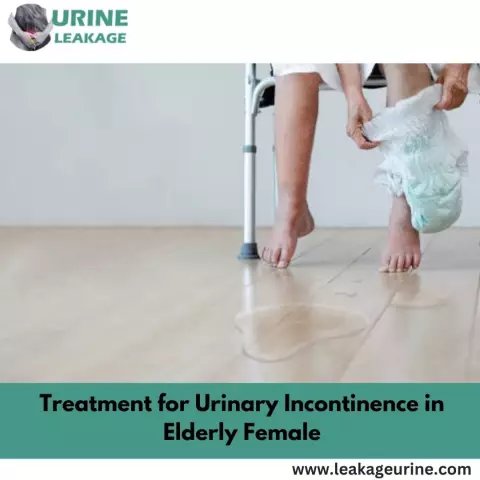- Author Rachel Wainwright [email protected].
- Public 2023-12-15 07:39.
- Last modified 2025-11-02 20:14.
Urinary incontinence in the elderly

Senile incontinence - the involuntary discharge of urine - is a fairly common phenomenon, observed in 70% of women and men of advanced age. The problem of urinary incontinence in the elderly is at the junction of several areas of medicine: urology, gynecology and neurology, covers almost all aspects of the life of patients, making it difficult for their everyday, professional and family adaptation.
However, urinary incontinence should be treated in the same way as any other medical condition that is not embarrassing. Urinary incontinence in the elderly is a natural manifestation of aging in the body, which can be caused by abnormalities and failures in the functioning of some systems.
Causes and types of urinary incontinence in the elderly
Normally, a healthy person urinates about 5-6 times a day, however, with age, changes in the human body can occur that disrupt the process of urination. The types of this pathology are usually divided into:
- Stress urinary incontinence in the elderly (30-40% of cases), caused by weakening of the pelvic floor muscles. Typically occurs when running, sneezing, laughing, lifting weights, exercising;
- Urgent urinary incontinence (15-20% of cases) associated with increased activity of the bladder. It is provoked by external irritating factors: the noise of pouring water, washing dishes, drinking alcoholic beverages, cold season, etc.;
- Transient (temporary) urinary incontinence. In the elderly, it can be associated with infectious and inflammatory diseases of the bladder (acute cystitis). In women, this type of incontinence can be associated with inflammation of the vagina or urethra, accompanied by the presence of urgency, frequent urination, burning;
- Overflow incontinence. This type of urinary incontinence in older men is often associated with a history of benign prostatic hyperplasia, narrowing of the urethra, and less often prostate cancer.
In some cases, hormonal changes in the body can be the cause of urinary incontinence in older women. An age-related decrease in the level of female hormones causes atrophic changes in the cervix and urethral epithelium.
In addition, urinary incontinence in the elderly can occur due to severe stress and diseases of the nervous system (stroke, Parkinson's disease).
Treatment of urinary incontinence in the elderly

In order to find out the degree and causes of urinary incontinence, complaints from patients are collected, optical examination, X-ray and ultrasound examination of the bladder, urodynamic examination, urine culture is carried out. Currently, there are several methods for treating urinary incontinence in the elderly:
- Non-drug;
- Medication;
- Surgical.
The essence of the non-drug method is to train the bladder to increase the interval between urinations. To do this, patients must restrain their natural urge to urinate with a strong contraction of the anal sphincter. Also, for patients suffering from involuntary urine flow, it is recommended to exercise exercises to train the pelvic muscles.
Medication practice is aimed at reducing the contractile activity of the bladder by taking antidepressants and antispasmodic drugs.
Although conservative treatment of urinary incontinence in the elderly has achieved good results, in some cases it is necessary to perform surgery. Most often, surgical treatment is used in the treatment of patients with stress urinary incontinence, less often in the presence of an urgent form of urinary incontinence.
YouTube video related to the article:
The information is generalized and provided for informational purposes only. At the first sign of illness, see your doctor. Self-medication is hazardous to health!






